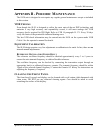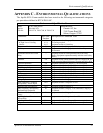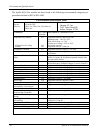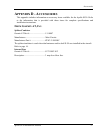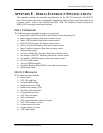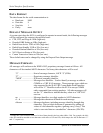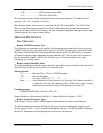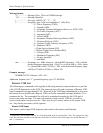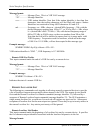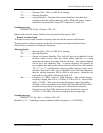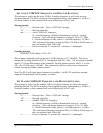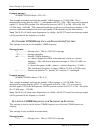
Serial Interface Specifications
Apollo SL30 Installation Manual
61
<CR> ....................... ASCII carriage return (0Dh).
<LF> ........................ ASCII line feed (0Ah).
The maximum message length, including the start of message character (“$”) and the end of
message <CR><LF> sequence, is 25 bytes.
This message format is the same as is used in the SL40 VHF Comm Radio. The SL30 will be
able to accept all messages intended for an SL40 without generating a serial communications
error. It will ignore all of those messages, the only exception being those messages used to input
Comm frequency lists from a remote source.
MESSAGE DEFINITIONS
INPUT MESSAGES
Remote COMM Frequency Lists
The following two commands work together in allowing remotely connected devices to provide
COMM frequency lists associated with an airport to the SL30. The host device should first send
the Remote Airport Identifier Name command (message identifier 04), followed by a sequence
of Remote Frequency Input commands (message identifier 05). The list type field is used to tie
the two commands together. The SL30 will receive up to 10 Comm frequency lists, each
containing up to twenty entries.
Remote Airport Identifier Name
This input command provides the airport identifier name that is used to identify to the user which
airport facility that the list of frequencies is associated with.
Message format:
“C” ................ Message Class. This is a COMM message.
“04” ............... Message Identifier.
t...................... List type: (ASCII) “0”, “1”,…,”9”
aaaa................ Airport Identifier of the frequency list. Note that if the airport identifier is
3 characters, then the 4th character will be filled with a space. Airport
Identifiers are restricted to using ASCII characters 0-9 and A-Z.
Example message:
$PMRRC041SLE<SP><chksum><CR><LF>
Airport Identifier to be associated with list #1, Airport Identifier to display is “SLE “.
Remote Airport Frequency Input
This message is used to input COMM frequency data used for the remote recall function.
The data included is a character defining the list type, a character defining the frequency type
(tower, ground, ATIS, ...) and 2 characters defining the frequency. The SL30 module will accept
the first 10 frequencies received through the serial port for each airport.



